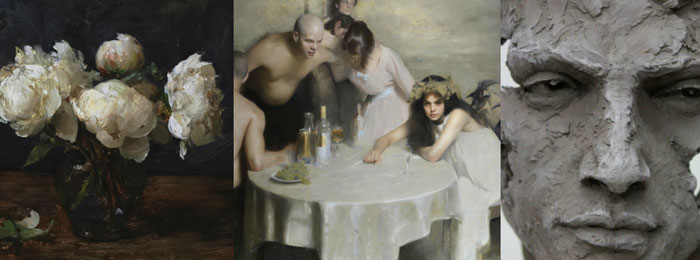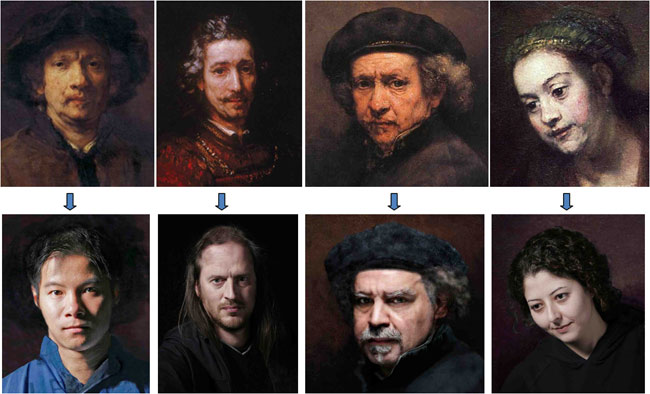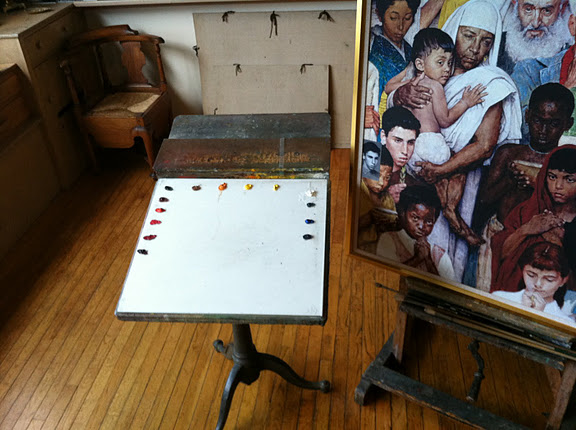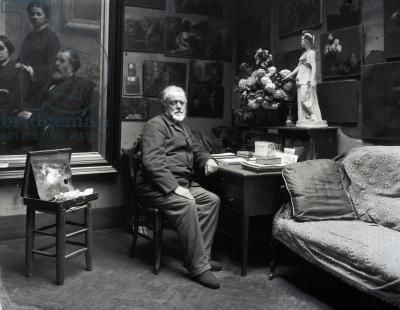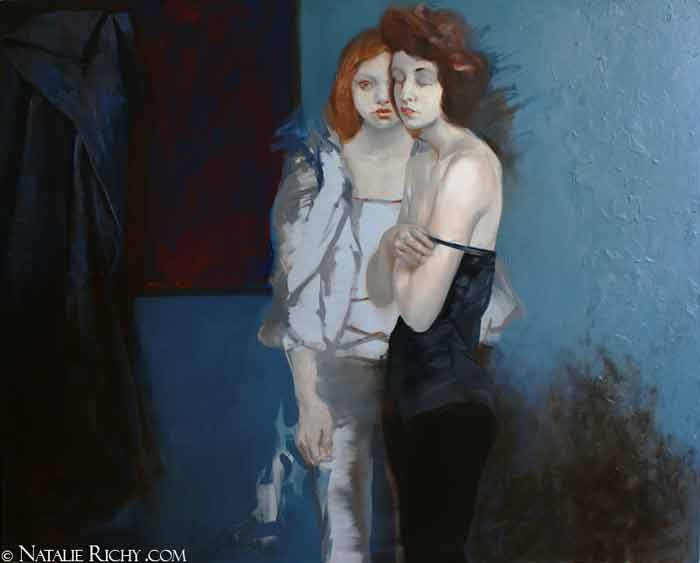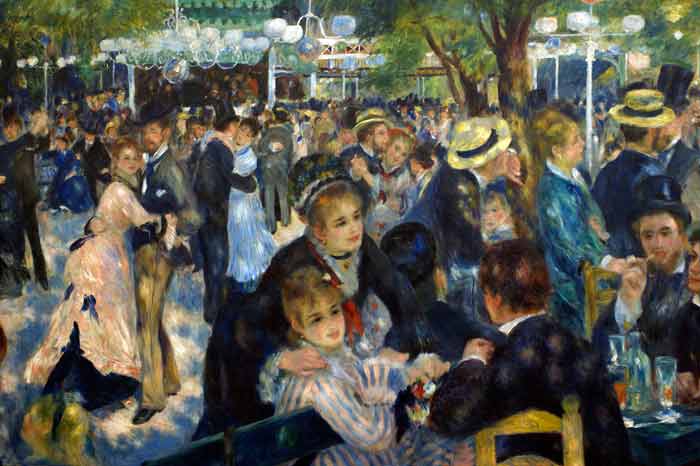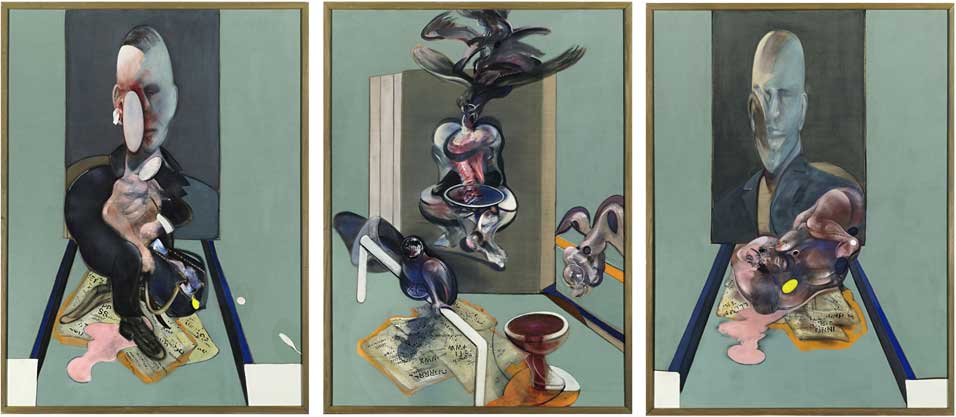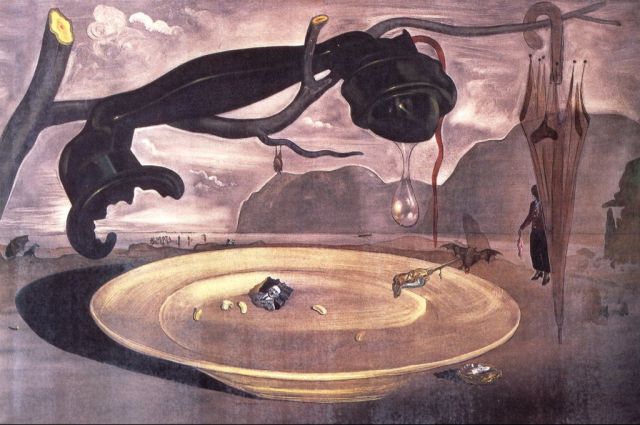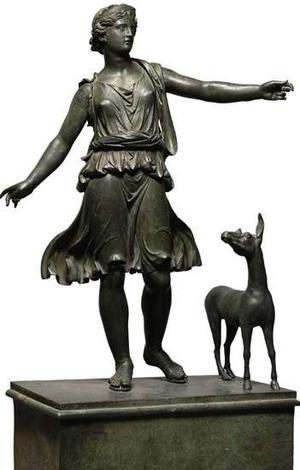On 4 Dec, 2016 With
Feedback from Jessica Dosseh
I have to say I’ve always loved art and it has always been a big part of my life.
At some point in my life, someone asked me, “What type of artist are you?” At that time I didn’t know. Determining who you are and where you belong is one of the most challenging things in life.
All I want is to learn and to keep on learning so one day my art may have an impact on someone else’s life no matter how small. …
Read More
On 25 Jan, 2012 With
Secrets of Rembrandt’s Painting Technique Rembrandt’s paintings have transfixed viewers for centuries, but now a new study reveals a scientific explanation for their calming beauty. By painting more detail in and around the eyes of his subjects, Rembrandt tapped into an innate human attraction to the face. This creates a more calming and immersive experience for the viewer. To figure out Rembrandt’s painting secret, scientists used computer rendering to match photos of current models (and a scientist) with four of Rembrandt’s portraits. They manipulated four regions of the portraits: regions centered about each eye, on each side of the chin, and the region where the collar meets the skin of the neck. CREDIT: Steve DiPaola, James Enns, Caitlin Riebe. Steve…
Read More
On 9 Dec, 2011 With
Norman Rockwell’s Palette Norman Percevel Rockwell was a 20th-century American painter and illustrator. Alizarin crimson Cadmium red (deep) Cadmium scarlet Cadmium red (extra pale) Burnt sienna Raw Umber Raw Sienna Ferrous yellow Lemon yellow (WN) Zinc white Viridian Cobalt blue Ultramarine blue He has these colors listed as sometimes Magnesium blue Cadmium yellow (medium) Cadmium orange Light red Mars Violet From Rockwell on Rockwell: How I Make a Picture by Norman Rockwell (Hardcover – Nov. 1979)
Read More
On 25 Aug, 2011 With
Palettes of Famous Painters: The Degas palette The Degas palette above is from earlier in his career, when he was still using the earthy tones common to the Dutch tradition. It lightened considerably in later years as his subject matter altered. Although there are a number of prescribed ways in which to lay out oil paint – light to dark; as per the colour wheel; basic palettes of three colours and white – all artists begin by lining up pigments at the top of the palette and use the remainder of its space for mixing.
Read More
On 5 Aug, 2011 With
Henri Fantin-Latour (14 January 1836 – 25 August 1904) was a French painter and lithographer best known for his flower paintings and group portraits of Parisian artists and writers. As a youth, he received drawing lessons from his father, who was an artist. In 1850 he entered the Ecole de Dessin, where he studied with Lecoq de Boisbaudran. After studying at the École des Beaux-Arts in Paris from 1854, he devoted much time to copying the works of the old masters in the Louvre. Although he befriended several of the young artists who would later be associated with Impressionism, including Whistler and Manet, Fantin’s own work remained conservative and classical in style. Whistler brought attention to Fantin in England, where his still-lifes sold so well that they were “practically unknown in France during his lifetime”. In addition to his realistic paintings, Fantin-Latour created imaginative lithographs inspired by…
Read More
On 4 Aug, 2011 With
This Video shows the creation of the figurative painting. The canvas is toned with a thin layer of oil imprimatura, and the two figure drawing is done in sanguine. The oil painting approach is one of simplification of form and colour. In contrast to the clarity with which Natalie describes faces, details of the dress and drapery are done in loose brushstrokes and are stylised impressionistically. The composition of the painting is located in fictive surroundings. The elegant blue colours in the painting suggest nostalgia, which ads imaginative and aesthetic significance. Natalie brought to this figurative picture a modern sensibility, impressionistic effects and painterly fluency.
Read More
On 30 Nov, 2010 With
• Bal Au Moulin de la Galette (1876) by Pierre-Auguste Renoir. Sold for $78.1 million in 1990 at Sotheby’s, New York.
Read More
On 16 Nov, 2010 With
The most expensive contemporary art painting ever sold 2008: The most expensive contemporary art painting ever sold at auction: Triptych (1976) by Francis Bacon. Sold for $86.3 million.
Read More
On 3 Nov, 2010 With
During Adolf Hitler’s childhood, academics were not his strong point. In grade school, Hitler’s grades in Mathematics, Science, History, German, and French were adequate at best and this greatly displeased his father, Alois Schickelgruber. However, in the early 1900s Adolf Hitler showed an interest in art and began to excel very quickly. Hitler’s average grades were good enough to get him accepted in a university preparatory “gymnasium” or the technical/scientific, Realschule. He chose Realschule because they offered a course in drawing. In 1906, Adolf was permitted to visit Vienna, but he was unable to gain admission to their prestigious art school. Nonetheless, this did not stop him from creating more works of art. Hitler went on to produce many drawings…
Read More
On 22 Oct, 2010 With
The most expensive work from classical antiquity ever sold at auction 2007: The most expensive work from classical antiquity ever sold at auction: Roman-era bronze sculpture of Artemis and the Stag. Sold for $28.6 million.
Read More


